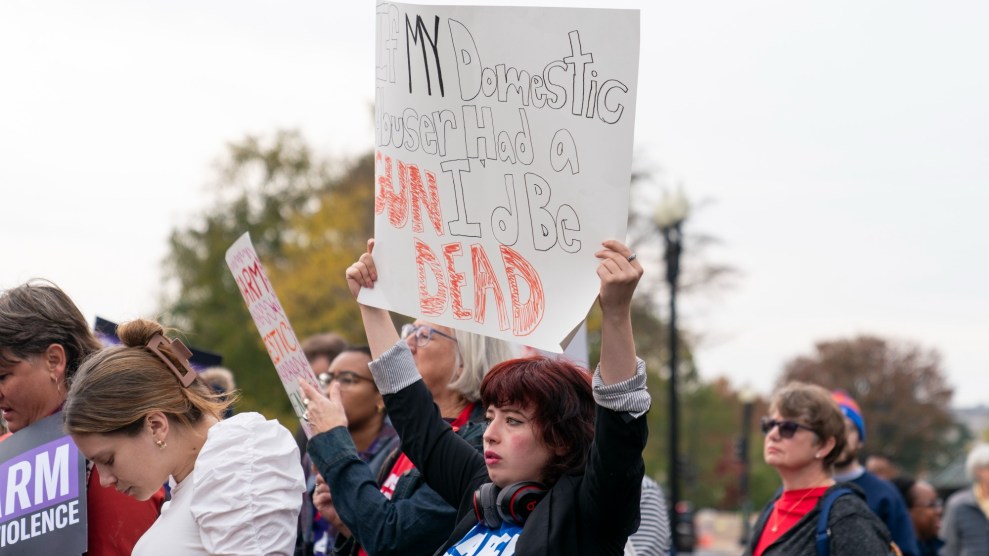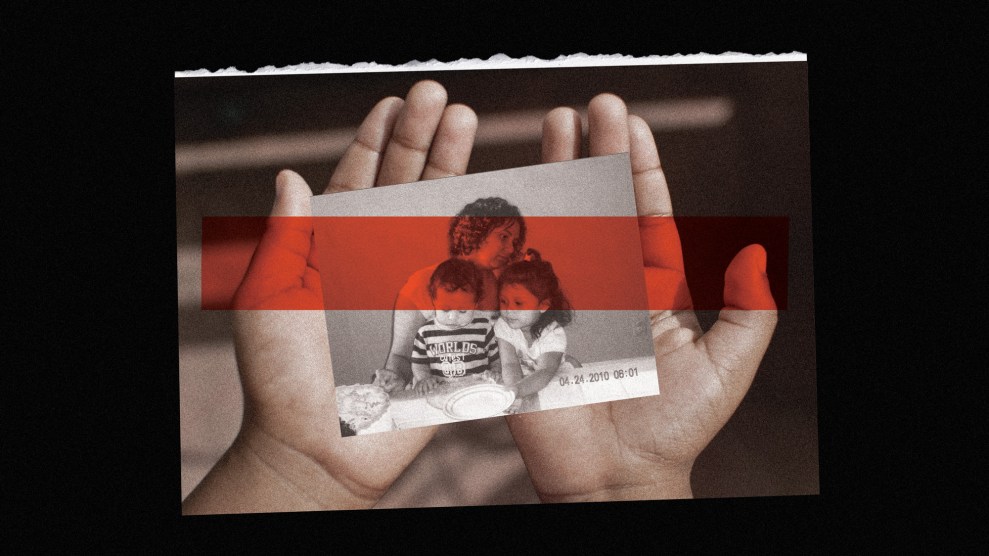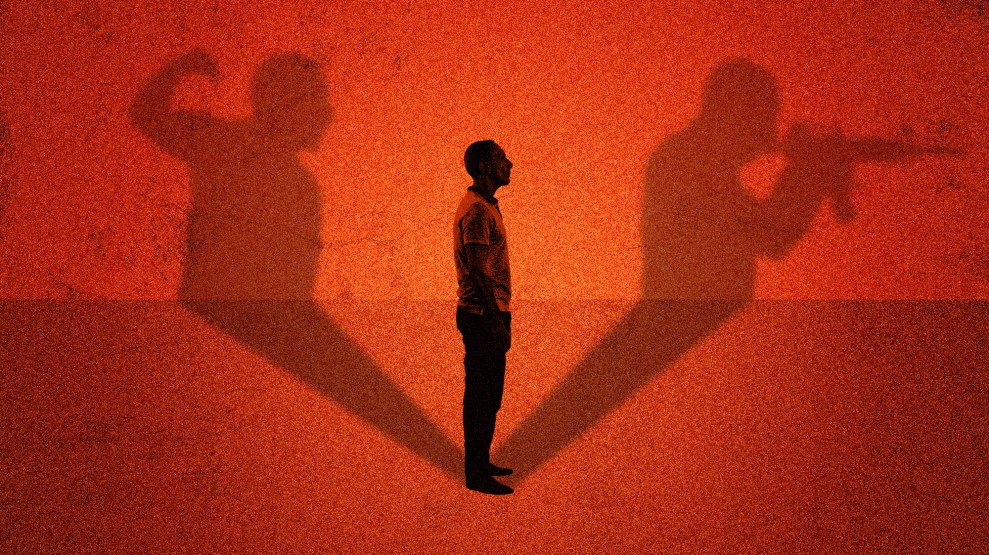
Stephanie Scarbrough/AP
On Tuesday, the Supreme Court heard arguments in United States v. Rahimi, a firearms case challenging a federal law that for three decades has prohibited people who have domestic violence restraining orders from possessing guns. Based on oral arguments, it appears likely the policy will stand. But the reasoning is complicated, and far from a clear victory for survivors or gun control.
At the heart of the case is a battle between the freedom to own a firearm and the rights of domestic violence survivors to choose how they get to safety. Last year, the Supreme Court ruled in New York State Rifle & Pistol Association Inc. v. Bruen that gun restrictions could only be enacted if they are “consistent with the Nation’s historical tradition of firearm regulation.” That opened up the possibility to challenge this gun restriction that has been viewed as widely effective; according to the FBI, between November 1998 and October 2023, the law denied access to firearms 78,031 times because of domestic violence orders.
Rahimi comes from the U.S. Court of Appeals for the Fifth Circuit in New Orleans, which has birthed several conservative, high-profile Supreme Court cases. At the center of the case is 23-year-old Zackey Rahimi. He moved with his family to Texas from Afghanistan and grew up in poverty. As my colleague Madison Pauly detailed:
According to court papers, in December 2019… Rahimi assaulted his girlfriend in a parking lot, dragged her into his car, fired his gun when he noticed a bystander watching, and threatened his girlfriend’s life. She escaped the car and applied for a restraining order, which was granted after Rahimi did not show up for a hearing. Among other restrictions, the two-year restraining order suspended his handgun license, prohibiting him from possessing a firearm. Yet within a year Rahimi had broken the restraining order and threatened another woman with a gun; in a two-month span in late 2020 and early 2021 he participated in five shootings around Arlington, Texas, according to the Solicitor General’s Supreme Court petition.
A court in Texas ruled that Rahimi’s behavior was likely to happen again and that he had “committed family violence.” It issued a two-year protective order that severed his ability to possess a firearm. Domestic violence protection orders are civil tools, not criminal. A court requires an alleged abuser to stay physically away from the victim, their family, and relevant other locations like workplaces, and limits or halts communications—providing safety and a kind of peace to the survivor. Rahimi then ignored the court order, possessed a gun, and was arrested in early 2021. After pleading guilty to a federal charge for violating the protection order, he received a six-year prison sentence.
After a grand jury indicted Rahimi, he repeatedly attempted to appeal the ruling by claiming that his Second Amendment rights were violated. He wasn’t having any success until Bruen happened and created this new test for gun laws. The Fifth Circuit took up Rahimi’s case and eventually ruled in his favor.
For advocates pushing to stop domestic violence, this showed that the Bruen test was a worrying standard. Rahimi’s case was appealed again by the Department of Justice—this time to the Supreme Court. As liberal justices, the prosecution, several briefs, advocates, and survivors of domestic violence have raised throughout this case: the Constitution lacked protections for victims experiencing domestic violence. The “Nation’s historical traditions” have not often included protecting survivors. (It took over a century after the Second Amendment was written for “Wife beating” to be illegal in all states.)
“I don’t actually think that they were leading with the context of domestic violence,” Sabrina Talukder, the director of the Women’s Initiative at the Center for American Progress, told Mother Jones. “I think that they were leading with the framework of what should be Bruen and within that is the context of domestic violence.”
In oral arguments on Tuesday, justices seemed adequately convinced that Rahimi’s history of gun violence was reason enough to restrict his access to firearms. Rahimi posed a threat to his girlfriend, their child, and the community at large. But that does not necessarily mean that the court is going to broadly say that domestic violence orders should stop all firearms rights. Rahimi’s case is so severe, and the facts are hard to ignore. This specific challenge is unlikely to topple the firearms ban for those under a domestic violence restraining order, but it’s still immensely unclear what the scope of the court’s opinion will be or if they will take up a more sympathetic case in the future.
The Bruen test requires the court to look back to the founder’s laws and intents. Because there were no laws on the books about domestic violence from that time, the justices then turn to other precedents about from whom this country has historically withheld guns. These requirements can be vague, and generally have to do with if a person is dangerous, irresponsible, or not a law-abiding citizen.
Much of the discussion in the room was over just what the line is for “dangerousness” and “irresponsibility” to overrule Second Amendment rights. Justice Samuel Alito wanted to discuss what happens in a “he said/she said situation.” And Chief Justice John Roberts worried that these concepts could be “extremely broad.” Would people who are “yelling at a basketball game in a particular way” lose their guns?
The apparent dangerousness of perpetrators isn’t always as easy to see as in Rahimi. In other cases, the conditions can appear more complicated—with abusers that enjoy community popularity and don’t neatly fit into these parameters that the court is weighing. Historical tests can leave out the day-to-day experiences of what survival has looked like for centuries.
Jennifer Becker, the director of National Center on Gun Violence in Relationships and the project director for the National Resource Center on Domestic Violence and Firearms, told Mother Jones that protection orders feature “flexibility” and “comprehensiveness” in a way that criminal proceedings can lack. “There are times in which judges can address, at least on a temporary basis, things like visitation, custody, child support, so there can be continuity for the family—if it’s appropriate.”
Since the Fifth Circuit decision, there’s been an over 40 percent increase in all calls from domestic violence survivors that involve firearms. Women of color and pregnant, queer, or disabled people are uniquely and disproportionately bearing the brunt of this violence.
More than half of all women who die by homicide are killed by a current or former male intimate partner. A study found that, of women alive in 2016, around 1 million had been shot or shot at by an intimate partner, and 4.5 million women had been threatened with a firearm. And in more than two-thirds of mass shootings, the perpetrator had either killed at least one partner or family member or had a history of domestic violence. When an abuser has a gun, they are five times more likely to kill a partner, and on average, dozens of women are killed with a firearm by an intimate partner each month.
“A firearm is a tool of control,” Ruth Glenn, president of the new survivor-led nonprofit Survivor Justice Action, told Mother Jones. “I walked by the gun on the refrigerator every day,” Glenn, who is the former CEO of the National Coalition Against Domestic Violence, said. “It is used to threaten, harass, intimidate—and victims know that it would just take a second to make something happen.”












